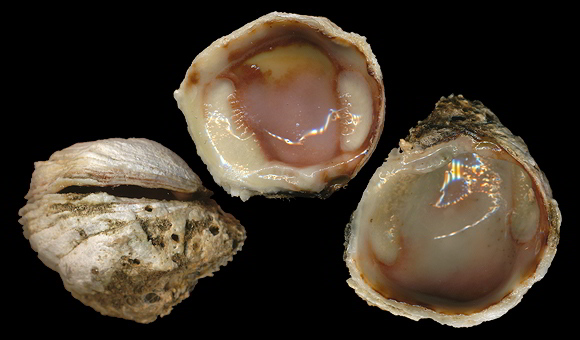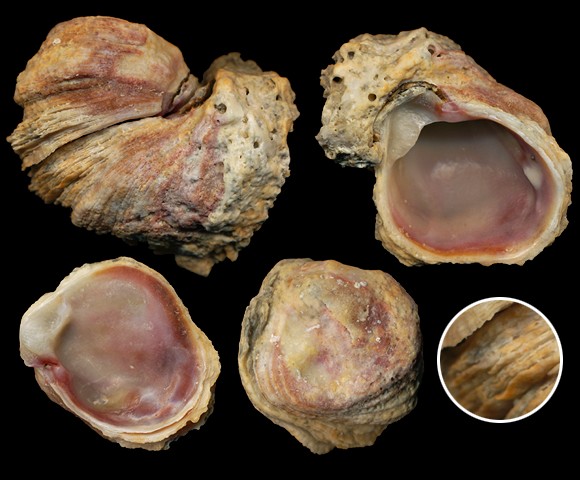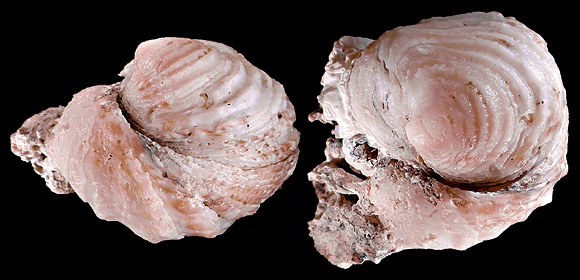
Cemented to hard substrate, subtidal to circalittoral.
Original taxon: Chama corbieri.
« Shell counterclockwise, glabrous, suborbicular, thick, white, opaque, with a prominent beak, radially folded, and with disordered, numerous, pressed against each other transverse lamellae; lower valve swelled, deep; upper valve flatter with a small umbo; inside shiny, white, with purple margins and cardinals; tooth and resilifer serrated, margin crenulated. » – J. H. Jonas: “Beitrag zur Erklarung der in der Description de l’Égypte abgebildeten”, Zeitschrift für Malakozoologie Jahrg 1846, Hannover 1846, p.126.
Shallow water, on wall of ancient warehouse, “Sunken City of Epidaur”, southern bay, Dimos Archaias Epidavrou, NE. Peloponnese, Greece. 36mm.

« Shell heavy, solid, medium sized, strongly inequivalve. Lower valve deeply concave with large attachment area. Upper valve rather flat. Outline irregular, often subcircular. Sculpture of closely spaced lamellae which end as narrow spines but are usually worn out. Internal margin smooth but traces of crenulations may be present along the posterior margin. Big, rounded muscle scars. Color: externally no coloration except in very old specimens when purple tinges appear between lamellae. Internally a deep purple around the margins. » – CIESM. Above: 3m deep, on flat limestone banks near the pontoon, southern end of Plaka beach, northwestern coast of Elounda bay, Lasithi, N. Crete. 39mm.
